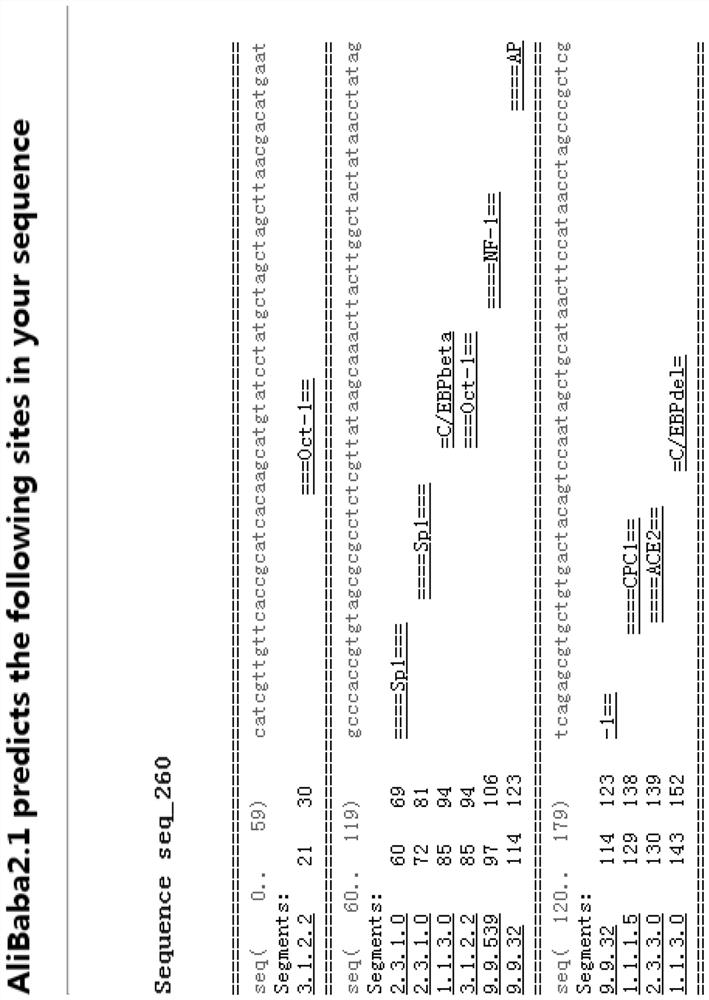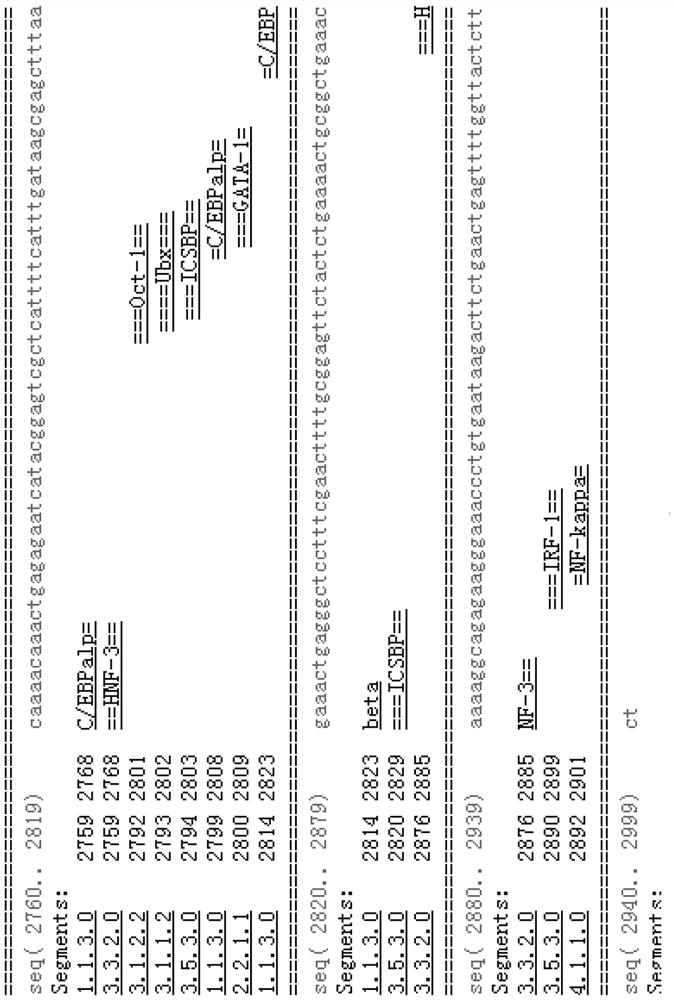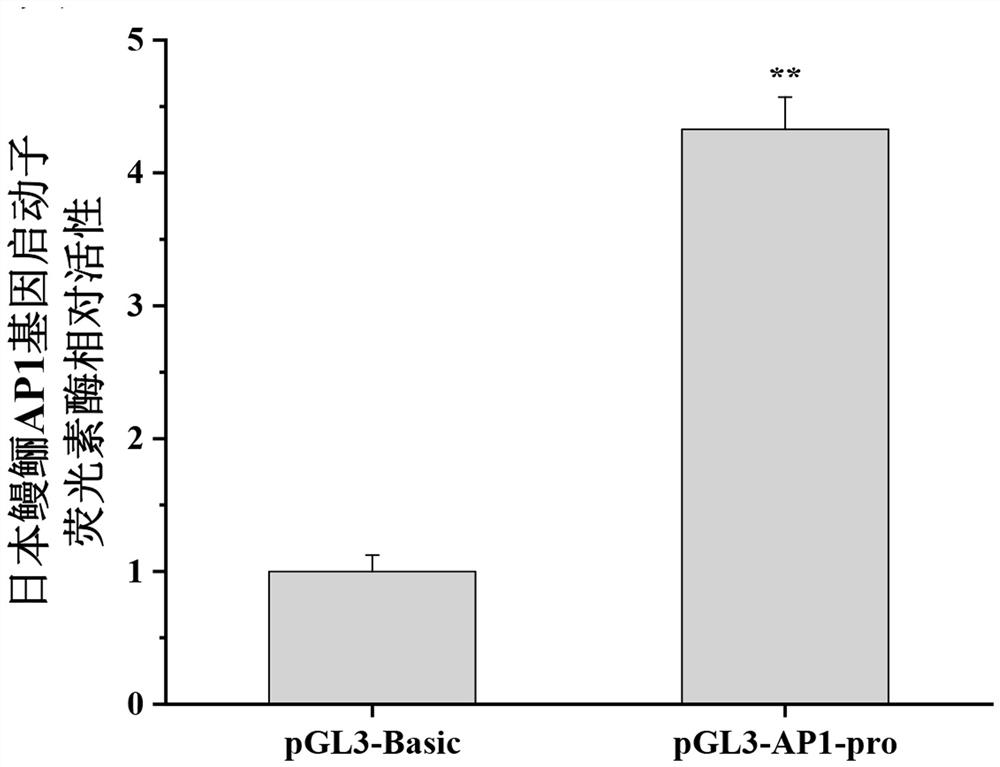Anguilla japonica transcription factor AP-1 gene promoter and application thereof
A technology of AP-1 and transcription factors, which is applied in the field of genetic engineering and can solve problems such as fish AP-1 gene promoters that have not been reported.
- Summary
- Abstract
- Description
- Claims
- Application Information
AI Technical Summary
Problems solved by technology
Method used
Image
Examples
Embodiment 1
[0042] Example 1 Cloning of the Japanese eel AP-1 gene promoter
[0043] 1. Using the TaKaRa MiniBEST Universal Genomic DNA Extraction Kit Ver.5.0 Kit to extract and purify the genomic DNA from the Japanese eel muscle tissue. The specific operation is as follows:
[0044] Take 10 mg of Japanese eel muscle tissue and mince it with a blade, put it in a 2 ml centrifuge tube, add 180 μL of Buffer GL, 20 μL of Proteinase K and 10 μL of RNase A (10 mg / mL), and warm it in a water bath at 56°C overnight for lysing .
[0045] Add 200 μL Buffer GB and 200 μL 100% ethanol to the lysate, and mix well by pipetting. Place the SpinColumn on the Collection Tube, transfer the solution to the Spin Column, centrifuge at 12,000 rpm for 2 minutes, and discard the filtrate.
[0046] Add 500 μL of Buffer WA to the Spin Column, centrifuge at 12,000 rpm for 1 minute, and discard the filtrate.
[0047] Add 700 μL of Buffer WB (with the specified volume of 100% ethanol previously added) to the SpinC...
Embodiment 2
[0055] Example 2 Analysis of the transcription factor binding site of the promoter sequence of the Japanese eel transcription factor AP-1 gene
[0056] On-line prediction software for transcription factor binding sites in 5′ flanking regions of genes registered online
[0057] Alibaba2 (http: / / gene-regulation.com / pub / programs / alibaba2 / index.html)
[0058] Copy the AP-1 gene promoter sequence that has been verified by the cloning test and paste it in the dialog box in fasta format, and click START to perform the prediction analysis of the transcription factor binding site. partial results such as figure 1 , figure 2 shown.
Embodiment 3
[0059] Example 3 Activity analysis of the promoter of the Japanese eel transcription factor AP-1 gene
[0060] 1. Construction of the recombinant luciferase reporter gene vector pGL3-AP1-pro containing the promoter fragment of the Japanese eel transcription factor AP-1 gene.
[0061] Insert the promoter fragment of the Japanese eel transcription factor AP-1 gene into the luciferase reporter gene vector pGL3-Basic of Promega Company, so that the expression of the firefly luciferase (Luciferase) reporter gene is controlled by the promoter of the Japanese eel AP-1 gene promoter , the luciferase recombinant vector constructed was named pGL3-AP1-pro. Specific steps are as follows:
[0062] Synthesize an upstream primer with a SmaI restriction site: 5 '- CCCGGGCATCGTTGTTCAC-3 ', and a downstream primer with a HindⅢ restriction site: 5 '- AAGCTTAGAAGAGTAACCAAAACTCAGTTC -3 '.
[0063]High-fidelity enzyme 2×PrimeSTAR® GC Buffer (Mg2+ plus) from Takara Company was used for amplificati...
PUM
 Login to View More
Login to View More Abstract
Description
Claims
Application Information
 Login to View More
Login to View More - R&D
- Intellectual Property
- Life Sciences
- Materials
- Tech Scout
- Unparalleled Data Quality
- Higher Quality Content
- 60% Fewer Hallucinations
Browse by: Latest US Patents, China's latest patents, Technical Efficacy Thesaurus, Application Domain, Technology Topic, Popular Technical Reports.
© 2025 PatSnap. All rights reserved.Legal|Privacy policy|Modern Slavery Act Transparency Statement|Sitemap|About US| Contact US: help@patsnap.com



